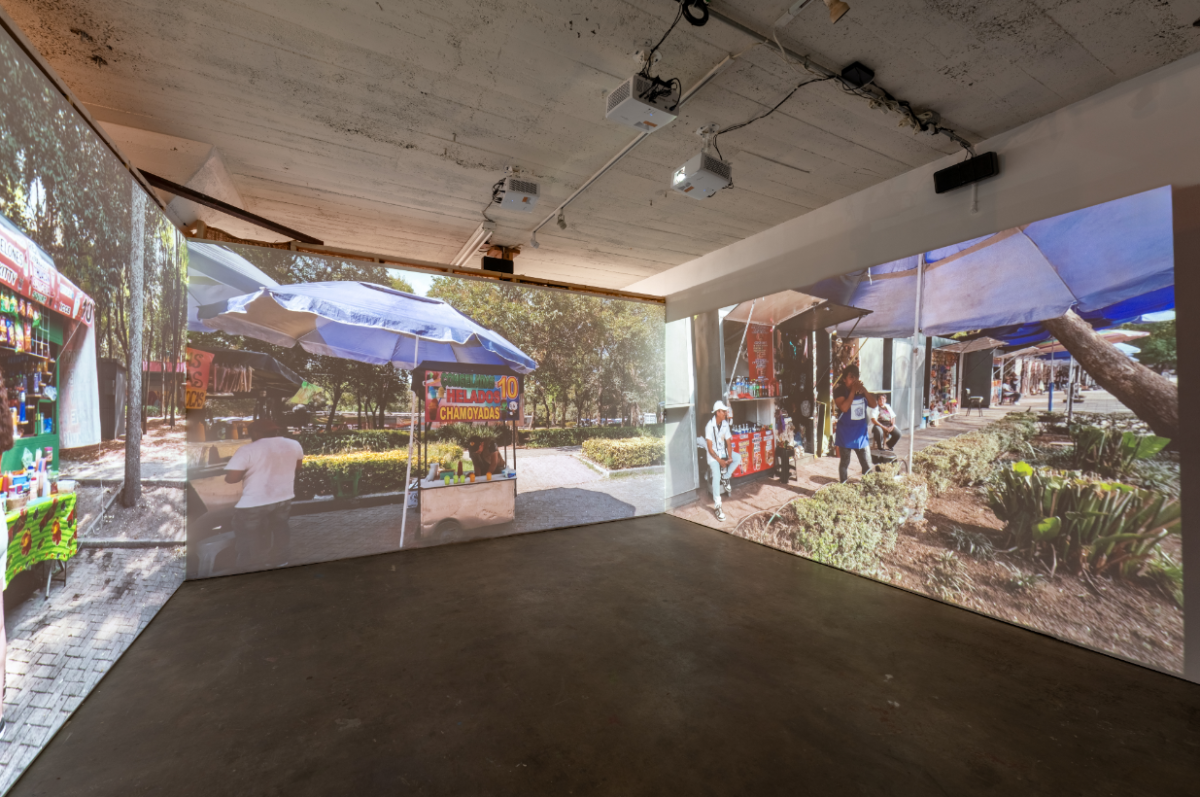“Cucarachalandia,” an art installation at the Northeast Sculpture Gallery Factory, combined artists and mediums to tell an immersive story about resilience, showcasing the importance of the cockroach in Chicano and Mexican culture.
The installation ran from June 15 to July 6 and featured the prints and films of artist Tina Tavera. The show also included poems and songs written by poets Anaïs Deal-Marquez, Gabriela Spears-Rico and musician Erick Biard.
The title “Cucarachalandia,” which roughly translates to “cockroach land,” was inspired by the name of the neighborhood where Spears-Rico grew up, in the Santa Maria Valley of California. She said she lived in a trailer park with a community of farm workers where cockroach infestations were common, hence the name.
“Growing up, I remember these very visceral images of living with cockroaches,” Spears-Rico said.
Spears-Rico immigrated to the United States at a young age with her parents, who picked strawberries for almost 20 years. She said her work for the gallery is inspired by her childhood and her experiences in a community of undocumented immigrant workers.
One of Spears-Rico’s poems in “Cucarachalandia,” titled “Bombas,” was inspired by her landlord setting off pesticide bombs in the trailers to rid them of cockroach infestations, exposing the residents to harmful pesticides in the process.
“I think about what it means to live in these kind of destitute, impoverished conditions, to have to live with infestations and at the same time be treated almost like an infestation ourselves as undocumented immigrant workers,” Spears-Rico said. “There was inhumanity in the way that we were also exposed to pesticides.”
Despite the extermination attempts, Spears-Rico said the cockroaches always came back, something she sees as a metaphor for the resilience of the farm workers she was raised with. In Chicano and Mexican culture, cockroaches are a symbol of resilience.
The famously catchy corrido “La Cucaracha,” a narrative metrical tale and poetry that forms a ballad, tells the story of a cockroach missing a leg and struggling to walk. During the Mexican Revolution, the song symbolized the people and the working class.
Inspired by the resilience and significance of the cockroach, visual artist Tina Tavera made a series of prints honoring Mexican and Chicano heroes in the Twin Cities. Cockroaches were present in each of the prints, keeping with the motif of the show.
Tavera honored local activist Jovita Francisco Morales, who founded and led El Movimiento Inmigrante de Minnesota. Morales spent over 15 years fighting for undocumented immigrants to be eligible for a driver’s license and state identification cards.
In 2023, the “Driver’s Licenses for All” Act was passed, expanding identification eligibility to everyone, regardless of immigration status.
Manuel Guerrero, judge, attorney and former chair of the Chicano and Latino Studies department at the University of Minnesota, was depicted in Tavera’s work as a superhero based on Superman. Guerrero spent much of his career representing immigrants from Latino communities in rural Southern Minnesota who were often impoverished and underrepresented.
Musician Erick Biard wrote a corrido about Guerrero, whose lyrics were displayed next to the print. Biard had a close connection to Guerrero, helping transcribe letters from Guerrero’s grandfather while he was a student at the University.
Corridos are often “mythical and exaggerated” stories that fit the “larger than life” Guerrero, Biard said. His song, written in Spanish, focuses on the importance of Guerrero to the local community and the impact of his death.
“Cucarachalandia” also honored local icons DJ Queen Duin and Susana De Leon Rivera, who worked to preserve the tradition of indigenous Mexican dance for over 30 years.
Music is an influential part of the work exhibited. Anaïs Deal-Marquez said her poems were heavily inspired by the Mexican son huasteco music she heard as a child in the Mexican state of Veracruz.
Deal-Marquez’s poems, written to the rhythms of son huasteco songs, centered around love, resilience and death. Inspired by her experiences as an immigrant, Deal-Marquez’s work featured imagery of nature, mountains and of course, cockroaches.
“I was thinking about the image of the cockroach as a witness to our history, to our people, to our community, to our resilience, to our survival,” Deal-Marquez said.
The installation included a small room with videos of Chapultepec Park in Mexico City projected onto the walls, accompanied by audio of bustling crowds and the calls of street vendors. This piece was made by Tavera, who wanted to capture the beauty of Mexico City, where her family is from.
“Even though ‘Cucarachalandia’ had a very kind of a Mexican theme, it transcends that,” Biard said. “All these themes are commonplace amongst immigrants, and we all have similar themes and issues and problems we’ve overcome to live here.”














